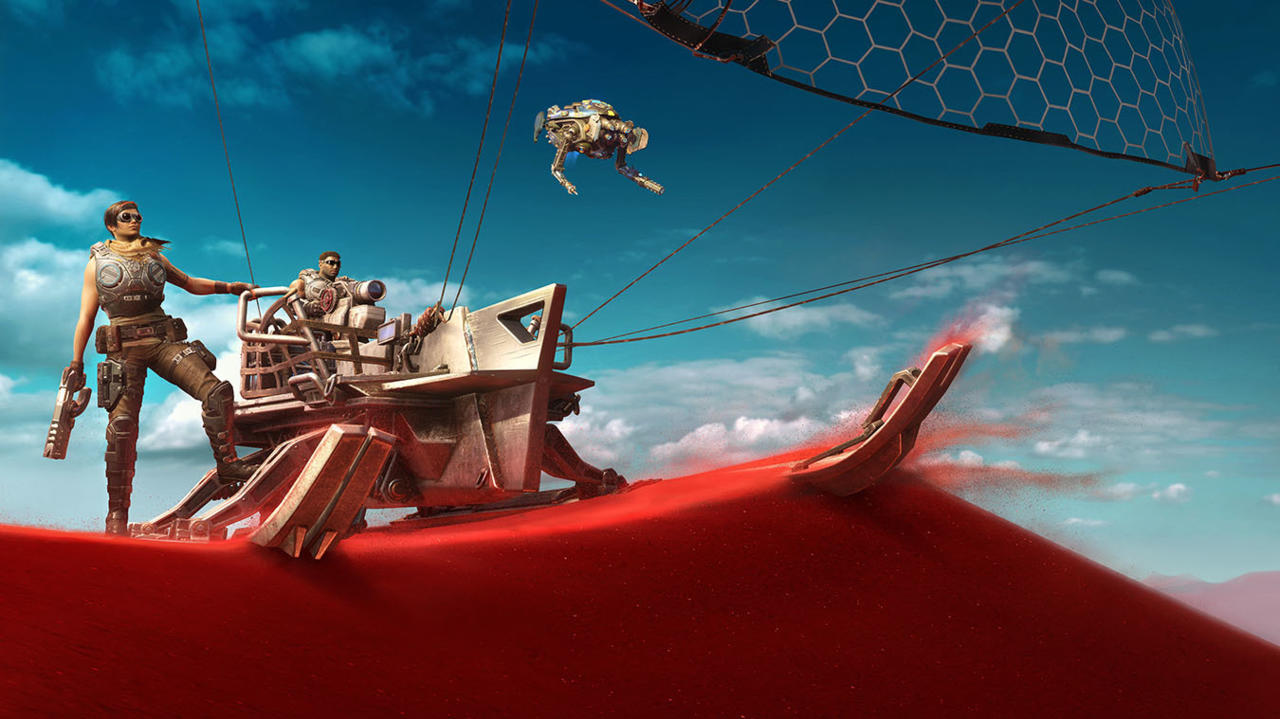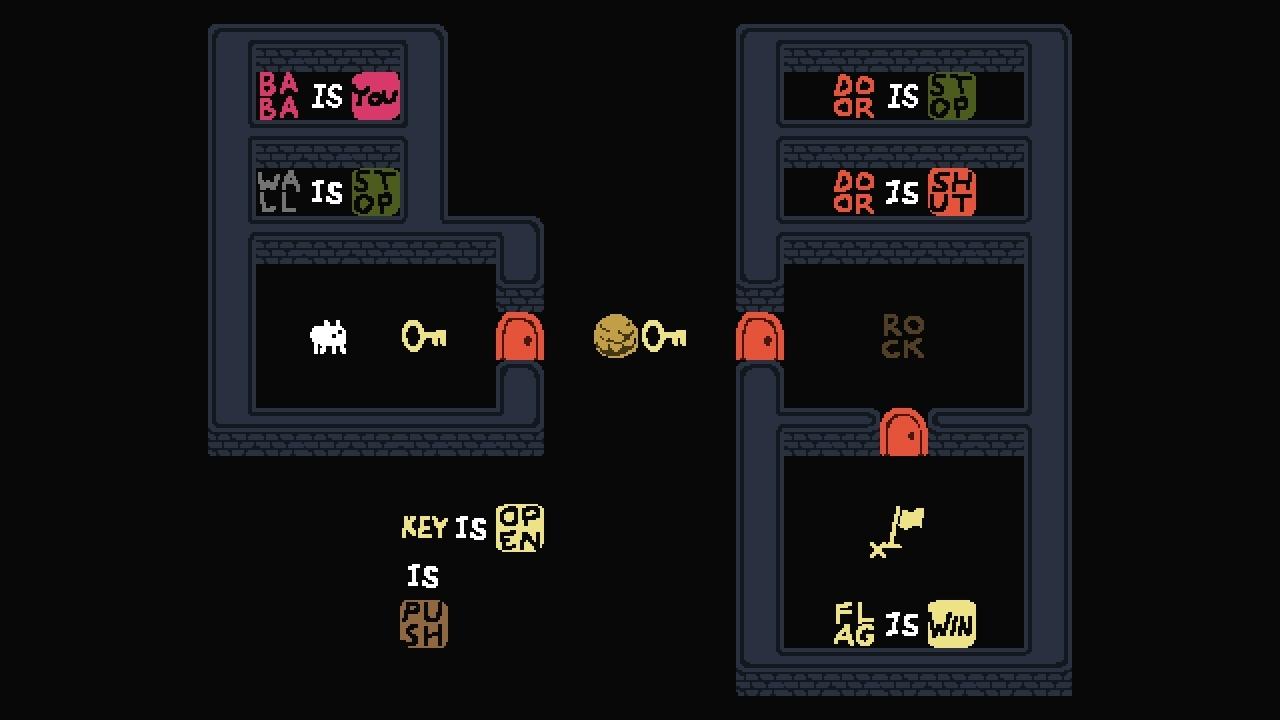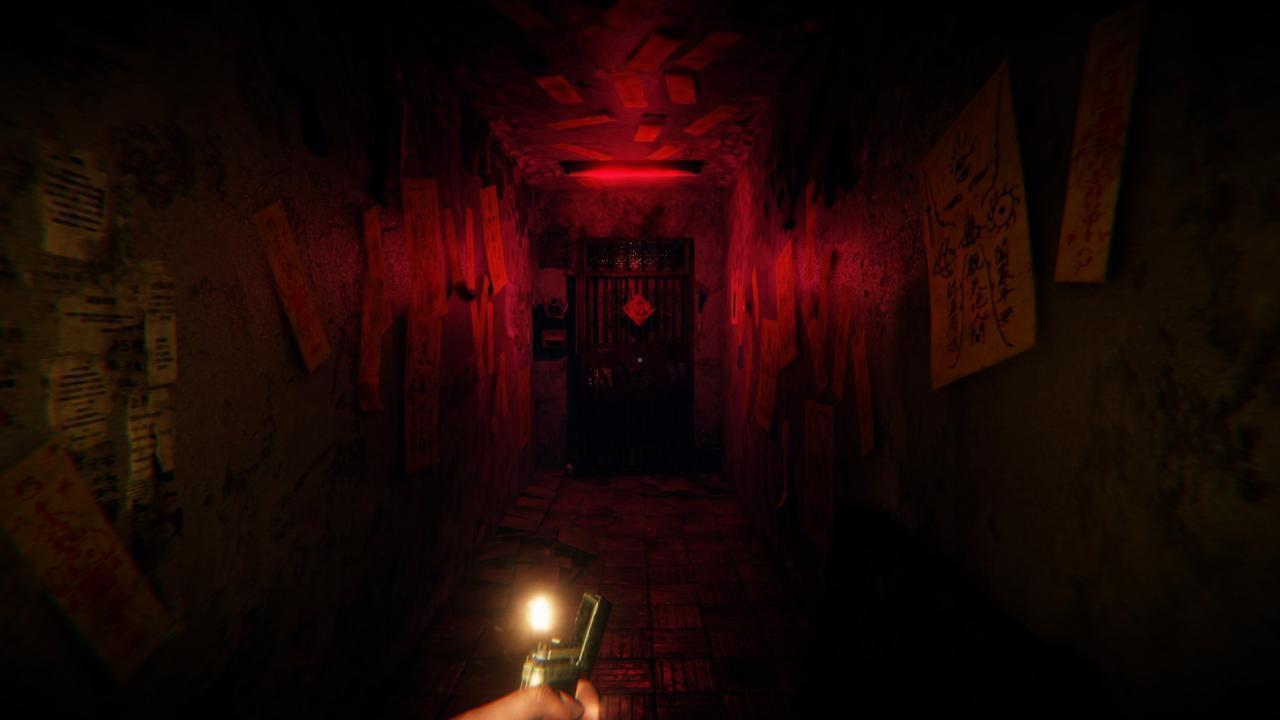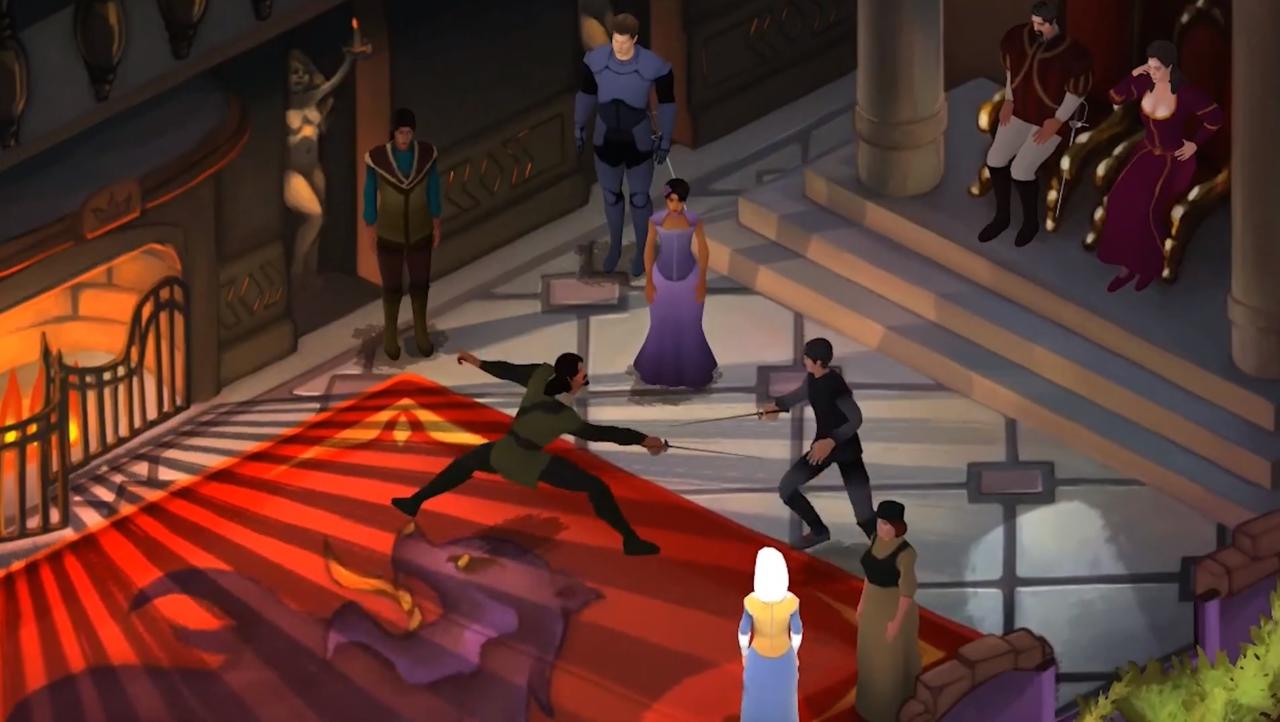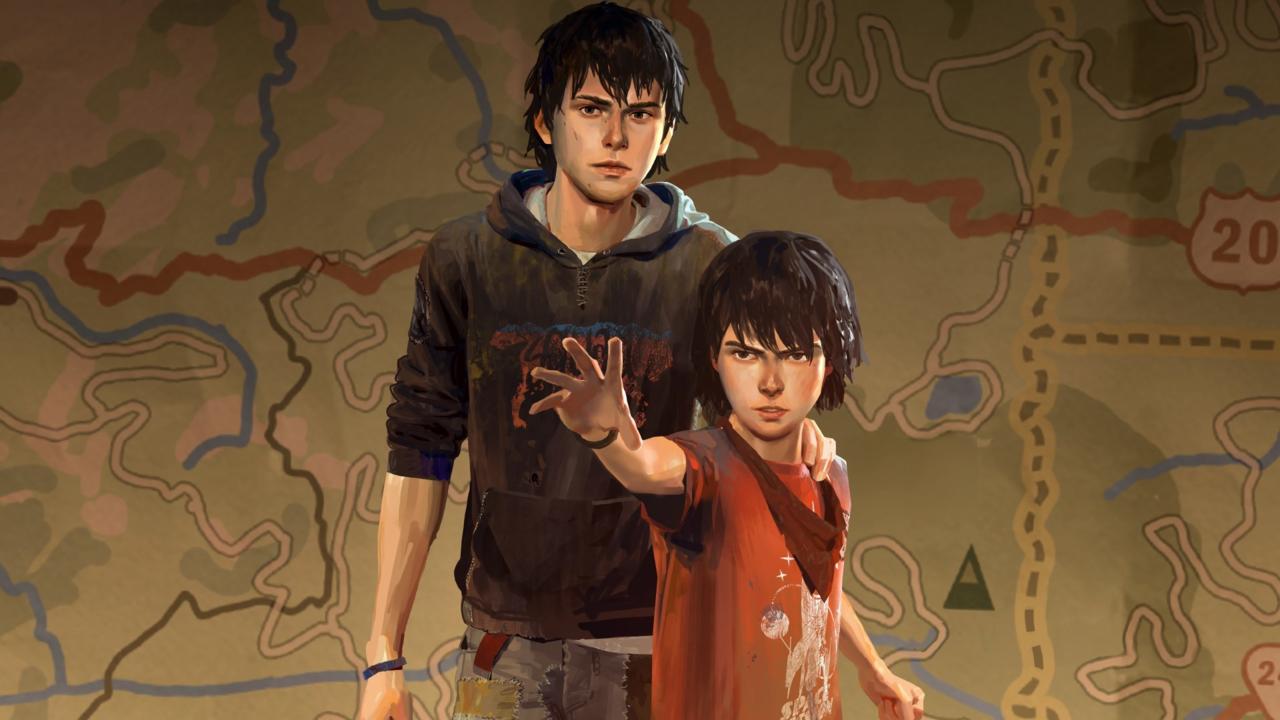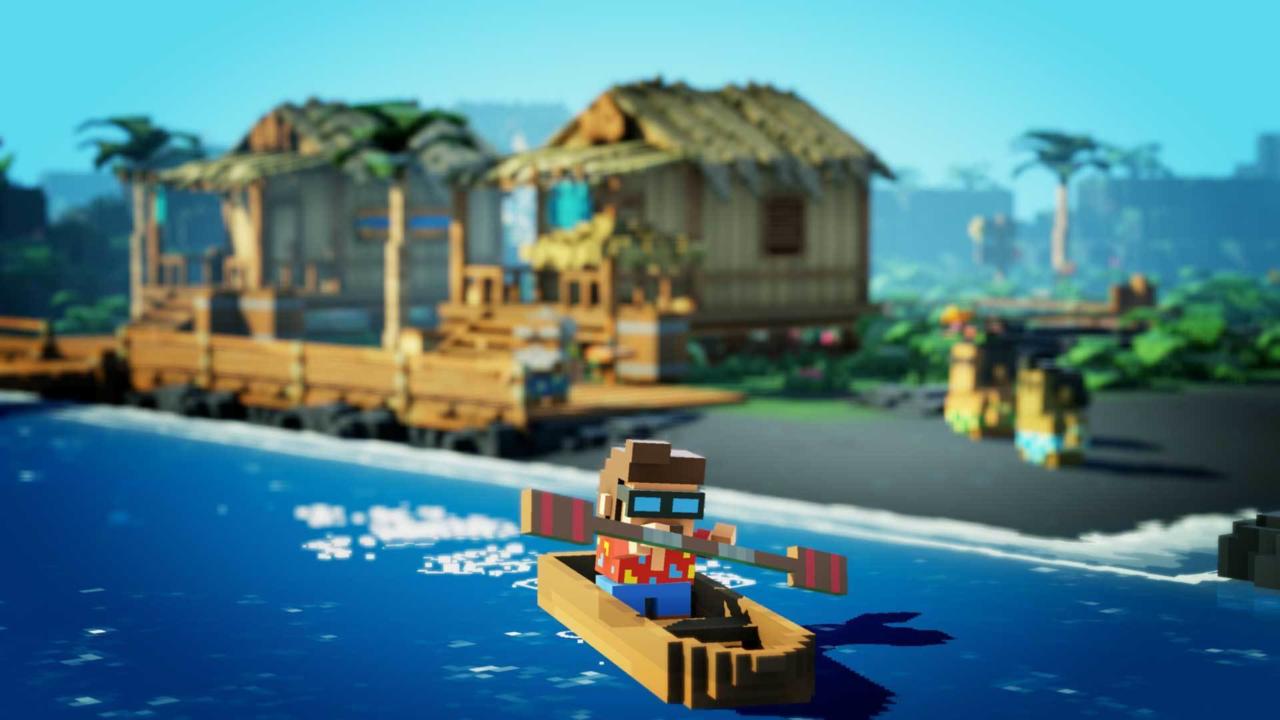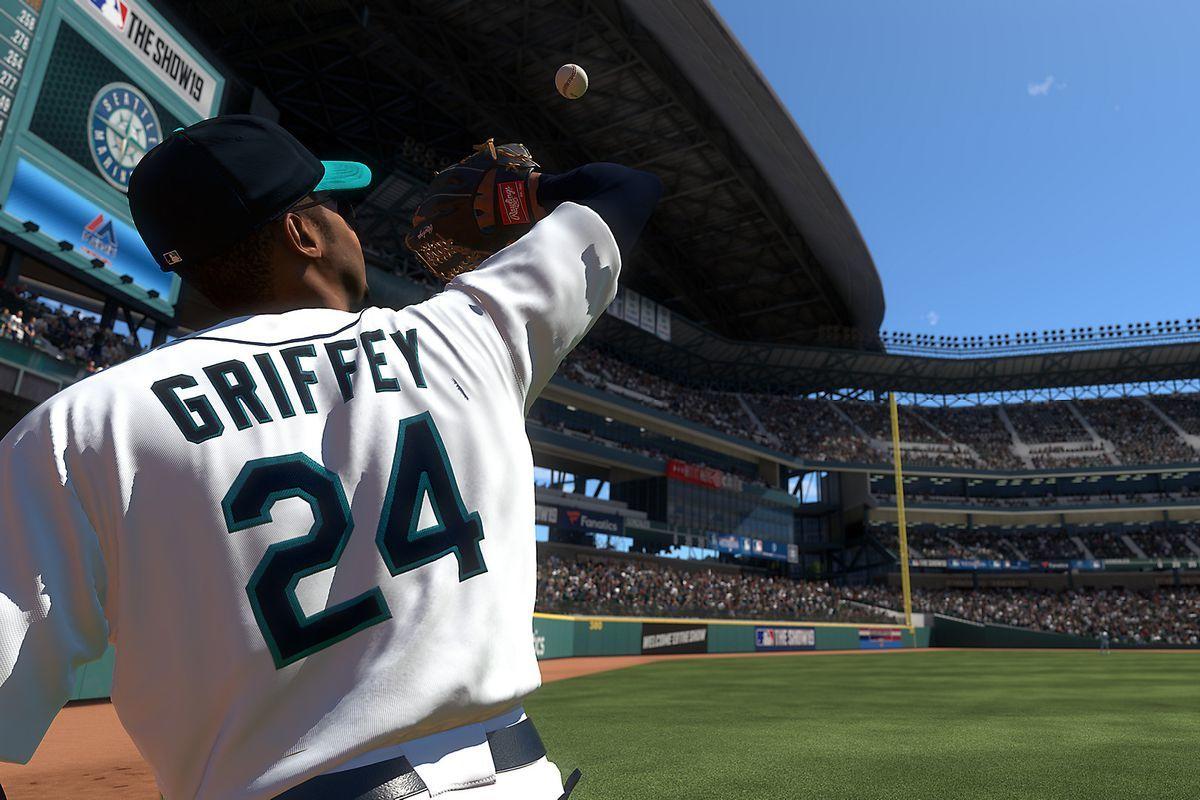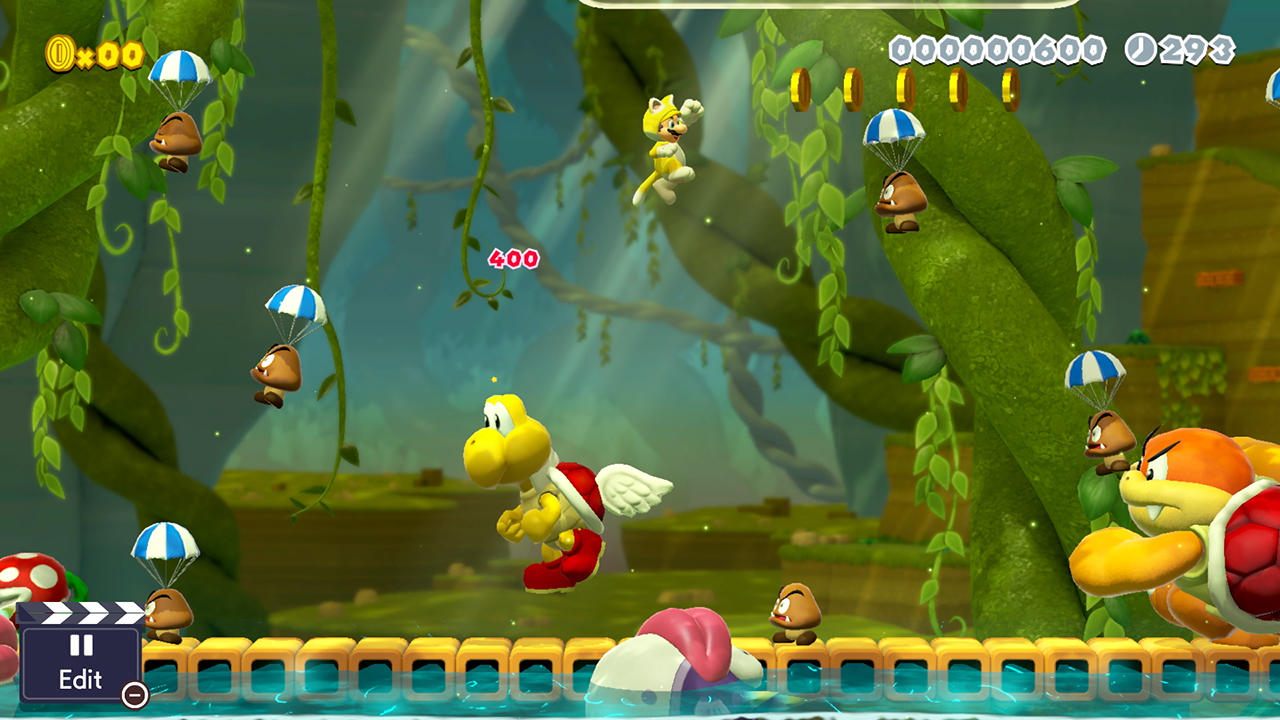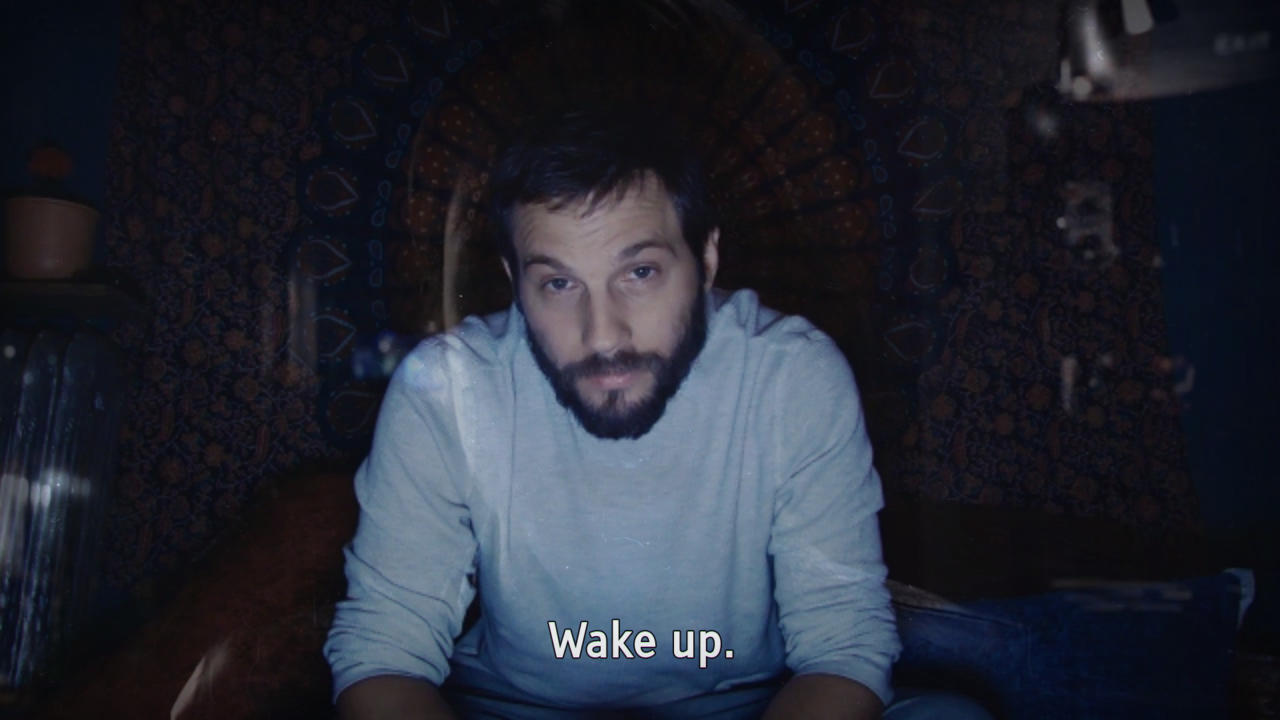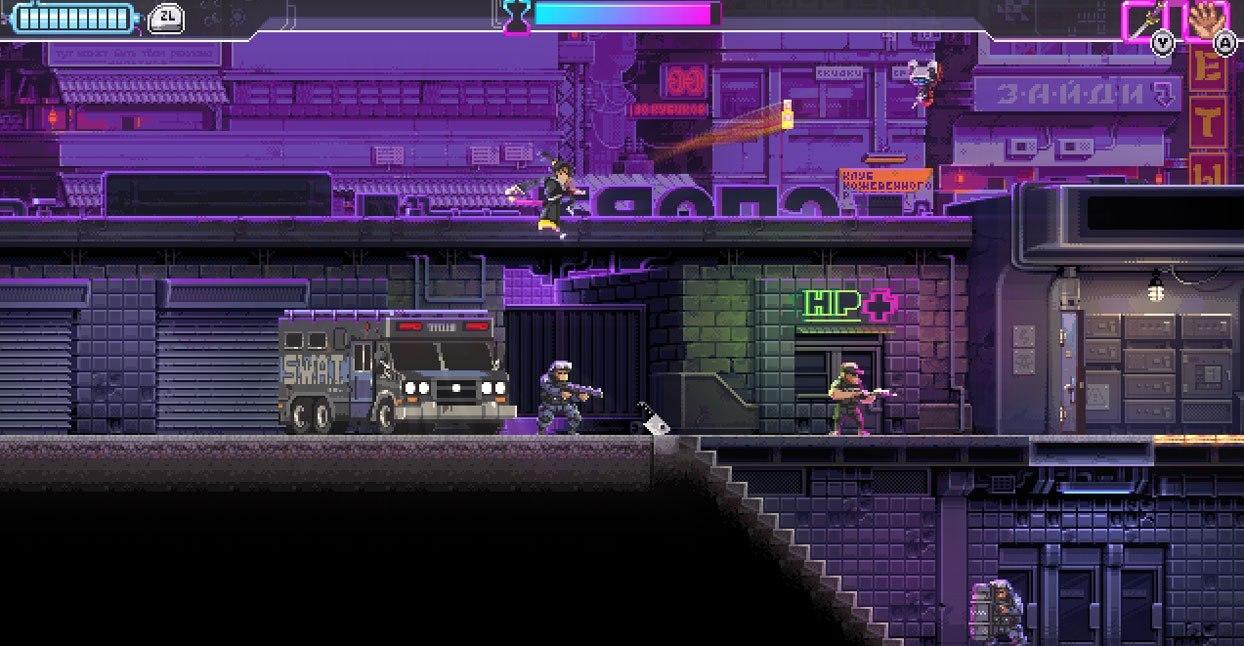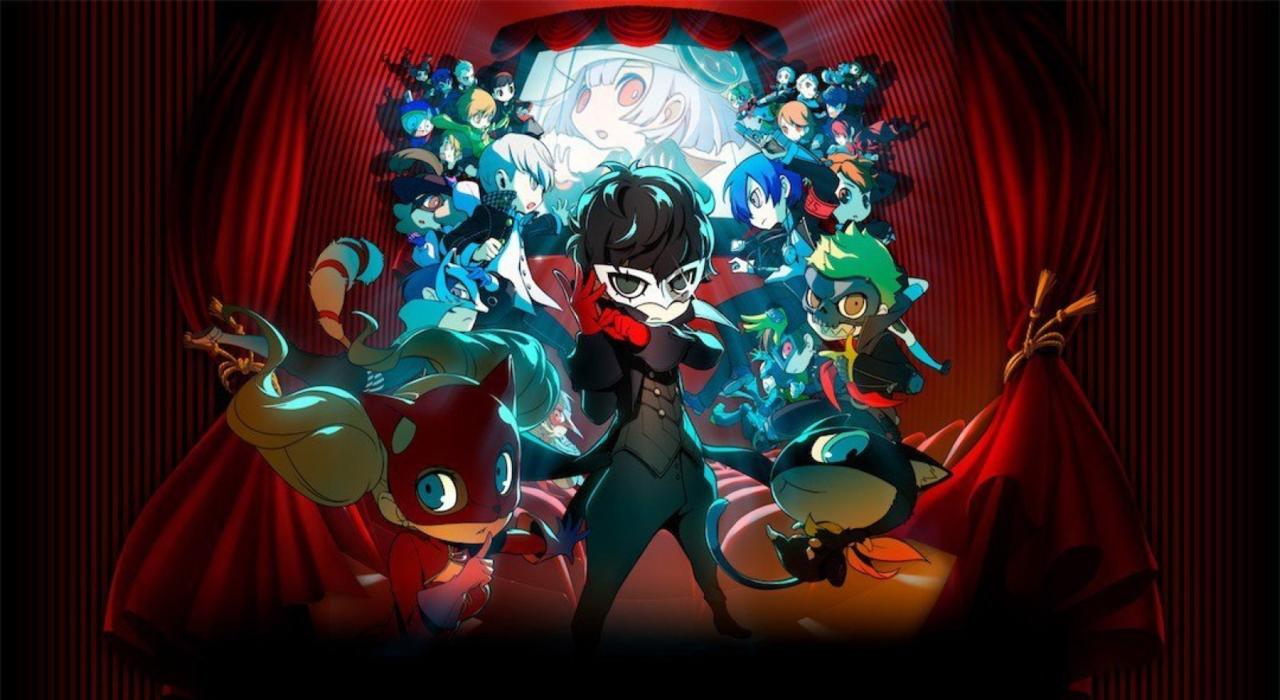GameSpot's Best Of 2019: Editor's Spotlight Awards
GameSpot may receive revenue from affiliate and advertising partnerships for sharing this content and from purchases through links.
Our Other Favorites Of 2019
This year's GameSpot countdown has finally come to a close, with From Software's Sekiro: Shadows Die Twice claiming the coveted number one spot. While every game we've highlighted in our Best Of 2019 awards is exceptional, there are still so many others worth talking about.
Like previous years, GameSpot is presenting its staff's picks for the 2019 Editor's Spotlight Awards. Pulling together write-ups from our numerous teams across the globe, we're calling attention to some of our favorite games this year that didn't make it into our top 10 or category awards. In the feature below, there were a lot of special games this year across PS4, Xbox One, Switch, and PC that left an impression on us.
This year has been wonderful for games. Despite the current console-generation nearing its end, there was no shortage of fantastic games to play in 2019, whether it was a sequel in one of the most iconic franchises in games, or an ambitious indie darling that took us by surprise. If you're curious about which games made it into the various categories of our Best Games of 2019 awards, be sure to visit our Best of 2019 hub.
Which games that we haven't called attention to do you think stand up as some of the best this year? Sound off your favorites and thoughts about them in the comments below.
Gears 5 | Xbox One, PC
Microsoft's biggest 2019 exclusive, Gears 5, was a real delight. As a lapsed Gears fan who enjoyed the series at the start on Xbox 360 but had moved on since then, Gears 5 got its meaty hooks into me at the start and kept me playing for months. The story mode features the franchise's best-ever graphics and animations, and tells a more personal story of the soldier Kait, who carries with her a haunting past she can't run from. For a series that started as a "dudebro" shooter with cringey jokes and too much testosterone, Gears 5 tells a more grounded and relatable story about loss and redemption (and still lots of over-the-top action and epicness).
The campaign also benefits from its new hub world areas that push the franchise into new waters after the more linear, traditional campaigns of earlier titles. Riding through the snow or the sand on your Skiff is a joy unto itself. The changes to the multiplayer mode, too, were a personal highlight for me. I tried Gears of War 4 but gave up quickly because it felt like it was all about twitch skills with the Gnasher. Gears 5's multiplayer feels more balanced and fair towards various loadouts, and in turn more fun and easy to return to.
The new weapons, including the epic Breaker Mace, retain the Gears franchise's penchant for 'I can't believe they just did that' while at the same time never feeling overpowered. Gears 5 is far from perfect, but it's a wholly satisfying and engrossing game that demonstrates Gears has finally hit its stride. | Eddie Makuch, Editor
Xeno Crisis | PC
Bitmap Bureau's Xeno Crisis isn't built to compete with big blockbuster releases, but rather to stoke your inner '90s gamer with fast-paced action that looks and feels right at home on Sega Genesis. Fittingly, the team has published Xeno Crisis for Sega's 16-bit console, producing new Genesis cartridges and boxes, with Mega Drive-flavored alternatives for non-US regions. It isn't confined to that console, however, with ports currently available on Switch, PS4, Xbox One, and PC--believe it or not, big Neo Geo cartridges are also on the way.
Xeno Crisis isn't a complicated game, but it wields explosive action and sci-fi themes with confidence to deliver a twin-stick-shooter challenge that's instantly exciting. Two players can partner up to blast alien mobs with a variety of weapons, all the while a rocking soundtrack from the masterful Savaged Regime pushes you forward and inspires a swell of adrenaline. It's one of my favorite soundtracks of the year, and it absolutely elevates Xeno Crisis from being a great game to one that's destined for infamy as one of the best retro creations of the modern era.
Grab a friend, turn the volume up, and take a trip back to a simpler time. Bitmap Bureau has delivered a pitch-perfect throwback that doesn't rely on nostalgia, but uses it to draw you into an action game with timeless appeal. | Peter Brown, Managing Editor
Baba is You | Switch, PC
As a voracious consumer of puzzle games, it's hard not to notice that many of them fall into a few familiar types. There are games of pattern recognition, like Picross or Sudoku, and others that rely on logic or spatial reasoning like most of the challenges in the Professor Layton series. The beauty of a puzzle game usually comes from how well it obscures or contextualizes these simple themes, but Baba Is You does something else entirely. It innovates and combines puzzle types into something that feels completely new.
Visually, Baba Is You appears similar to any classic block-pushing puzzle game, but your targets are actually strings of sentences. Pushing them into something resembling syntax makes the rules of the game itself behave differently, or even break. This makes the core mechanic feel something akin to learning a programming language, as you customize a series of if-then statements to change the rules around your goal. It's the criss-crossing of this complex logic puzzle with the spatial reasoning of the block-pushing puzzle that makes Baba Is You feel so immediately refreshing, and unlike any other head-scratcher to date. | Steve Watts, Associate Editor
Dragon Quest Builders 2 | PS4, Switch, PC
I love Dragon Quest Builders 2. This sequel to the Minecraft-like series spin-off is a warm, calming blanket for me purely due to its association with the classic RPG series. Still, there's more to the formula than how it satisfies my nostalgic affinity for all things Dragon Quest. DQB2 is an excellent adventure that leverages creativity and optimism to attach you to its world.
As a building game, DQB2 offers an expansive array of tools and blocks to make all your architectural dreams a reality. Whether it's a campaign build or an idea you tackle on the free-building Isle of Awakening, you can often spend dozens of hours constructing and refining your creations. But even if the building aspect isn't your thing, DQB2's story pulls you in with its infectious joy and easy charm. As the sole individual capable of rebuilding a world devastated by an evil cult and dangerous monsters run amok, you continuously play a role in impacting the lives of those around you. While this sounds dire, most scenarios are undeniably cheeky and heartwarming. In one chapter, you'll raise crops to save a struggling farm, while in another, you'll help beefy boys rebuild the resource lines of a mining town. The forces of evil often threaten these endeavors, but it's by the combined efforts of you and others that light wins in the end.
Okay, maybe that last line sounded somewhat cheesy, but like the mainline series, DQB2 thrives on how it can make such simplistic notions of heroism and positivity so endearing. There's so much heart packed into this 50-plus-hour journey spent building and reconnecting the world. I've already sunk in that much, and I won't be stopping anytime soon. If you missed out on the first Builders, you need to play DQB2. | Matt Espineli, Editor
Devotion | PC
Devotion is a horror game set across a handful of formative moments in one family's life in 1980s Taiwan. Using a series of doors in their dingy but cozy apartment building's lobby, you travel back and forth between evolving versions of the same home over the course of a few years, the highs and lows of its occupants unraveling before you in every overheard argument, misplaced memento, and crumpled medical bill. Through these small glimpses into the family's daily life, entire dimensions are born. The simmering resentment between the mother, a retired singer named Gong Li Fang, and her husband, a struggling screenwriter named Du Feng Yu. The quiet suffering of their daughter Du Mei Shin, a creative child kept away from school and her musical aspirations due to a mysterious illness. Feng Yu's feelings of inadequacy as a writer and a father fester in the shadow of his celebrity wife, while Li Fang's desire to return to her career to support her family paint her as selfish and conceited in the eyes of the press and her own husband.
That Devotion can portray such complex domestic grief as explosively and powerfully as it does, with only a static set and the echoing voices of a slowly collapsing family unit, is impressive. As I played, mundane relics took on fresh meaning as my time-bending exploration shifted the context into new, increasingly insidious corners of this family's personal affairs--a favorite storybook, a prized aquarium, a dusty record, a vase of fermenting wine. Of course, things get more chaotic and bizarre as you learn more about the course the family's life eventually takes--especially seen through the eyes of the unreliable player-character Feng Yu, whose growing obsession with a cult has terrible consequences for everyone he forces it on. But it's in these quiet, intimate revelations that Devotion is at its most devastating, as it explores the concept of devotion in its many forms--devotion to family, devotion to career, devotion to faith, and all the sickly, ruinous degrees that it can reach.
Perhaps most tragic of all is the fact that Devotion is no longer available to play--anywhere. An in-game talisman calling Chinese president Xi Jinping a "moron" and likening him to Winnie the Pooh incited boycotts and review-bombing from gamers in China only days after Devotion launched. Despite Taiwanese developer Red Candle Games' promise to remove the asset, Devotion's Chinese publisher, Indievent, had its business license revoked by the government as punishment. Devotion was pulled from every digital storefront worldwide after only six days. It's never returned, and as far as we know, it's not going to. For such a haunting and beautiful game to be denied to so many is infuriating, and I hope that despite the efforts to censor and erase this story, it can live on again one day. I'm so grateful I got the chance to play Devotion this year and urge everyone who wants to support Red Candle Games to seek out Detention, another excellent horror game the team released in 2017. | Chloi Rad, SEO Editor
Elsinore | PC
Hamlet is my favorite of Shakespeare's plays, specifically because it might be the most messed up. After the titular young Prince of Denmark has a run-in with the ghost of his father, the former king who died under mysterious circumstances, Hamlet becomes convinced his uncle, the new king, is the murderer--and that his mother, the queen, might be in on the plot. Hamlet becomes completely unhinged with the knowledge, and thanks to a bunch of political intrigue, oblique motivations, and uninformed actions, the whole story ends in just about everyone in the court meeting a tragic and grisly end. It's like watching a 15-car pile-up in iambic pentameter.
Cut to Elsinore, a game that takes the foundations of Hamlet--madness, murder, conspiracies, warring nations, and freakin' ghosts--and digs into the spaces between the scenes of Shakespeare's work. You play as Ophelia, Hamlet's one-time paramour, who is among the victims in the play. But instead of succumbing to her fate, she finds herself imbued with a supernatural power: she's caught in a time loop, waking up at the start of the story every time she dies at its end. With Ophelia at the helm, Elsinore turns Hamlet into a detective story, where you're tasked with following around the play's characters, learning about their inner lives, befriending them, and betraying them, all in the service of trying to save Ophelia's life and preventing everybody from ending up dead when the dust settles.
Elsinore isn't just a Shakespeare adaptation, which would be a pretty tall order in and of itself. It's a game that expands on a literary mainstay in a huge number of smart ways, adding depth to characters who don't get a lot of time on stage (most notably Ophelia, who in Shakespeare's play commits suicide rather than becoming a badass immortal sleuth). It's also a smartly built mystery, using its supernatural conceit to allow you to change Shakespeare's work through your actions, both subtly and profoundly depending on your choices.
With a deep understanding of the source material and a bunch of great ideas of how to alter it, Elsinore demonstrates a way that video game adaptations can add to even a renowned classic like Hamlet. It's full of well-executed ideas and great writing, making it a game you shouldn't pass up--whether you're a major fan of the Bard or just someone who likes getting lost in intrigue (and time travel stories). | Phil Hornshaw, Editor
Slay the Spire | PS4, Xbox One, Switch, PC
Slay the Spire is one of the many great arguments for a service like Xbox Game Pass, which let me discover my love for a type of game I normally wouldn't try. Slay the Spire is like a mashup of Darkest Dungeons and Hearthstone played out through the lens of a roguelike. You ascend your way up a tower, battling monsters and encountering random scenarios where you might have to make tough choices like, say, burdening yourself with a curse to earn a reward.
In battle, you're restricted to using a handful of cards drawn from your deck each turn and then discarded if they go unused. Your deck will likely grow over the course of each run, and it's this element that makes Slay the Spire so enjoyable. What initially seems like a pretty limited set of options for you to use quickly gives way to what feels like an unending supply of ways to customize your deck. During initial runs, I was quick to add any appealing-looking card to my deck, but in another run, I happened upon a choice: significantly reduce my maximum health in return for several cards that can reduce incoming attacks to one damage for a turn. Suddenly, I was motivated to keep my deck as small as possible to ensure I had one of these cards in my hand each turn. This is just one of the many, many wildly different approaches you can take.
Because you're at the mercy of the cards presented to you and the random encounters along the way, every run feels fresh. Aspects of what I'm describing won't be new developments for avid players of Hearthstone and other card games. But Slay the Spire has won me over in a way those games have not, in large part because it feels so much more manageable: cards are exclusive to each of the three classes, and because you can't freely remove any from your deck during a run, you're never faced with an overwhelming amount to manage. It's a delightful pick-up-and-play experience that'll keep you coming back again and again. | Chris Pereira, Engagement Editor
Cadence of Hyrule | Switch
Cadence of Hyrule isn't the first time The Legend of Zelda has crossed over with another franchise, but where previous releases such as Hyrule Warriors merely felt like an existing series with a Zelda skin, Cadence combines disparate game mechanics into an incredibly fun and cohesive package.
Crypt of the Necrodancer is all about rhythm and moving to wonderfully remixed Zelda music. Enemies move to the beat just like you do, so you have to dance and attack those around you to clear each screen. In Cadence's case, those baddies are classics like Octorocks and Tektites, plus cleverly portmanteau-ed bosses like Gohmaracas and Wizzroboe.
Necrodancer is also a roguelike, and Cadence expertly blends that subgenre with Zelda's classic overworld exploration. The general map stays the same, which means you'll see plenty of Heart Containers on high ledges to be collected with future tools, but every dungeon is randomly generated. If Link (or one of the other two protagonists) falls, the dungeon layout completely changes, and your Rupees are lost. But in true roguelike fashion, you can acquire diamonds to purchase upgrades and items with each new run, making it easier to chip away at stopping the evil Octavo's plot.
Once you finish the game, the roguelike elements ensure your second playthrough will be completely different. The overworld will rearrange itself, and those dungeons will continue to transform each time you delve inside. You can also play through the entire adventure as Link, Zelda, or the titular Cadence herself.
Cadence of Hyrule is a stellar example of how to do a crossover right, with complimentary game mechanics that capture what's fun about each franchise. The Legend of Zelda's charm will get your foot in the door, and Crypt of the Necrodancer's rhythm-based roguelike design will keep you dancing through the whole adventure. | Tony Wilson, Video Producer
Life is Strange 2 | PS4, Xbox One, PC
Life is Strange 2, Dontnod's latest episodic adventure game, had big shoes to fill. 2015's Life is Strange was a breakout hit, and its female protagonists, Max and Chloe, are beloved characters. Instead of taking the easy route and giving fans what they wanted--creating a sequel that continued the story of Max and Chloe--Dontnod took a risk and started from scratch with Life is Strange 2, instead introducing two new protagonists and a brand-new story.
Like the first game, Life is Strange 2 unfolds over the course of five episodes, one of which released in 2018, with the other four episodes dropping throughout 2019. The story follows two Latino-American brothers, 16-year-old Sean Diaz and his 9-year-old brother, Daniel, who are forced to escape Seattle after a tragic accident. Their goal: to reach Mexico, the land of their father. Like Max in the first game, Daniel discovers he has a superpower: a powerful form of telekinesis, which plays a huge role throughout the game.
As Sean and Daniel make their way south, encountering new friends, reconnecting with family, and escaping those who try to hurt them, Sean is forced to make major decisions that impact not only himself but his little brother, who is growing up and learning what type of man to be based on Sean's actions. This is an important distinction from the first game, and it's where Life is Strange 2 carves a meaningful path of its own. Life is Strange 1's ending was powerful but binary, and ultimately your choices throughout the game didn't affect what you could choose at the end. In Life Is Strange 2, your actions will truly come back to haunt you, and there are four major possible endings based on your choices going all the way back to episode 1, especially with regards to Daniel.
There's much more I could say about Life is Strange 2, but if you skipped out on it this year because you were disappointed it didn't focus on Max and Chloe, or it simply flew under your radar, give this game a chance. With complex characters, an emotional and satisfying finale, and some wonderful throwbacks to the first game that may help give you some closure (they did for me), Life is Strange 2 is a journey worth taking. | Jenae Sitzes, Commerce Editor
Ape Out | Switch, PC
Few games have grabbed my full attention as quickly as Ape Out. In less than a minute, its entire identity is on display. You play as an ape on a desperate pursuit to escape captivity by both sneaking past and brutally killing the gun-toting guards that roam each area. It’s played with just two shoulder buttons: one to grab guards and use them as meat shields and another to bash them into a bloody pulp. It’s extremely straightforward, but this is precisely why I love Ape Out so dearly. Despite showing its hand right away, Ape Out remains relentlessly captivating for its entire runtime.
Though simplistic in its design, Ape Out has a few tricks up its sleeve. First and foremost, the jazzy soundtrack follows your movements. Cymbals crash when killing enemies, and the tempo picks up as danger nears. The use of sound is clever, especially since the stripped down visuals obscure your field of view. Played from a top-down perspective, towering walls hide enemies that lurk around corners. The music serves as a rhythmic and entrancing guide.
Ape Out reminded me of the first time I played Hotline Miami. There’s little room for error, as death comes quickly. Level layouts and enemy positions are randomized to a degree, so each new attempt feels fresh and exciting. And the moment I escaped for good, I started a new file on the harder difficulty level. Ape Out is a game I will return to for years to come. Its pure, ceaselessly entertaining action gameplay reminds me of why I fell in love with games to begin with. | Steven Petite, Associate Commerce Editor
The Touryst | Switch
The Touryst is one of the most impressive games on the Switch to date. Its cube-based world is lit beautifully and always runs at 60 frames per second, thanks to the extreme tech expertise of developer Shin'en Multimedia, which previously developed Switch launch title Fast RMX. However, The Touryst is not just a delight to look at, it's also an incredibly fun adventure game set across a series of islands, all full of inhabitants looking for help with a specific situation. You explore these islands, helping their inhabitants by taking part in exceptionally clever minigames and puzzles.
The Touryst's main objective is to visit the islands, enter their ancient monuments, and collect their cores, bringing them back to Monument Island's own monolithic structure. To do this, you'll be hopping back and forth between all the different islands with new abilities or items that allow you to solve problems and puzzles that previously weren't possible. There's no combat, but it feels reminiscent of a classic Zelda game, where a hookshot can help you reach a new dungeon or a specific mask can convince someone you're capable of solving their problem.
And while not every character's side objective is required, I was compelled to complete everything, as there was always something unique behind each person's query. The Touryst is one of those games where you tell yourself, "Okay, only one more puzzle," and then the next thing you know, it's two in the morning and you've visited three other islands. Whether it was beating someone's high scores in an arcade, winning a surf competition, or breaking someone's pull-up record, I never grew tired of the incredible charm that permeates The Touryst. | Mat Paget, Tech Commerce Editor
Devil May Cry 5 | PS4, Xbox One, PC
After 11 years, Capcom finally released the direct follow-up to Devil May Cry 4. Though I remain a big admirer of Ninja Theory's 2013 reboot of the demon-slaying, hack-and-slash franchise, I can't deny that I was blown away by Devil May Cry 5's return to the series' traditional sense of cheesy bravado and action. I can never get enough of using Dante's various melee weapons to launch enemies up for a fatal blow with his shotgun, or using Nero's rocket-arm Devil Bringer to barrel my way through a pack of enemies. Devil May Cry 5 has got style, it's got substance, and above all, it's got big demon energy.
After spending well over 50 hours with the game, I can firmly state that the combat in Devil May Cry 5 is the pinnacle of the series. With three separate characters, all of which have their own mechanics, story beats, and bosses to fight--there's a lot to take in when coming to grips with the in-depth brawling gameplay. While Dante is always a fun character to play, and V is a fun diversion with his keep-away style, Nero quickly became my favorite of the bunch. Nero's devil-breakers, disposable prosthetic arms that have a variety of uses, add an entirely new layer to the young devil hunter's play-style, and it was always fun taking advantage of his skill-set in new and creative ways. Like I said, riding on Nero's rocket-arm is never gets old.
Devil May Cry is one of my all-time favorite action franchises, and I had a blast playing through the latest game. Even though this game marked the end of the "Sons of Sparda saga," there's still plenty of room for the series to grow. Right now, I'm hoping that Capcom has plans for a Special Edition release of DMC5. Historically it has done this with DMC3, 4, and DmC: Definitive Edition, and I think there's plenty of ways that DMC5 can be expanded upon even further. Let's hope that Capcom will give the supporting characters Lady and Trish another shot in the spotlight. | Alessandro Fillari, Editor
MLB The Show 19 | PS4
As the sports guy in the office, I’ve been the gameplay producer for everything related to Madden, Fifa, 2K, Chel, and even racing games, both in our videos or streams. I even play Chess competitively! So, when I was asked to cover MLB The Show 19, it was embarrassing to come to terms with the fact that the only thing I knew about baseball was being an Oakland Athletics fan--and that was purely because I love the Oakland Raiders.
I also know Derek Jeter, Eric Chavez, Barry Bonds, Jackie Robinson, the Great Bambino, and a few other names, which meant, funny enough, that I was immediately selected to be the guy to play MLB The Show 19 in the office. So the fact that I will still boot up my PS4 to mess around with fantasy drafts, or play a full 9 inning match is a testament to how rich this game is, and how much care the team at SIE San Diego Studio put into it.
I’ll admit that I will still whiff several swings despite correctly predicting the incoming pitch type, and I’ve been caught trying to steal third more times than I would like, but there is no better feeling for me than being on the mound. The timing and the curve of each pitch. The sound of my splitter suddenly diving down at the last second and popping into my catcher’s mitt. The reaction of my pitcher triumphantly fist pumping as I close out the 9th inning. Watching Matt Chapman scoop up a ground ball without breaking his stride (or breaking a sweat) and on that same foot throwing an absolute rocket to first base are all experiences that happen in a matter of seconds, but, to me, seem to last for much longer.
The game modes offered by The Show allow it to become the perfect baseball game for both newcomers and veterans of the sport. This leads MLB The Show 19 to truly set a standard for baseball games, and it becomes clear as I analyze Juan Soto’s jaunt on home plate and relish the idea of ruining his day with two four-seam fastballs and a slider. MLB The Show 19 is more than just SIE San Diego Studio’s love for baseball, it’s their eagerness to share their passion for America’s pastime with all of us, and that’s something worth celebrating. | David Ahmadi, Video Gameplay Producer
Super Mario Maker 2 | Switch
2019 was packed with fantastic releases, but no game this year occupied my time and imagination as much as Super Mario Maker 2, the Switch sequel to one of my favorite Wii U titles. At its core, Mario Maker 2 doesn't differ all that much from its predecessor, offering the same general features and easy-to-use toolset with which to create your own custom Mario levels. However, Nintendo has built upon this foundation with an assortment of new course parts, not to mention an entirely new game style based on Super Mario 3D World, opening up an even greater range of gameplay opportunities than were possible in the original.
What makes Mario Maker 2 such an appealing package is that it is essentially two games in one. You can completely disregard the course editor if you so choose and instead spend your time running through other people's levels, and the game will still feel like a complete experience. There's a never-ending supply of custom courses to play via the online Course World hub, and the option to race through these levels against other players--finicky as the connection can be sometimes--adds an exciting competitive edge to the usual Mario gameplay.
The course editor, however, is the true highlight and the reason I continue to return to the game regularly. Mario Maker 2 may not differ radically from the original, but it doesn't need to. Nintendo effectively perfected the course editor the first time around, and it remains just as delightful to tinker around with on Switch. The new course parts, in particular, are wonderful additions to the toolset thanks to their flexibility; one only need look at all the ingenious levels built around the new On/Off Switch to see the myriad ways these tools can be used.
More than anything, Super Mario Maker 2 is one of the year's most memorable releases because it makes you appreciate the craft that goes into designing video games. The toolset may be simple enough to use that anyone can create their own Mario level in a matter of minutes, but spend more time with it and you'll quickly learn that designing a truly good level requires planning, experimentation, iteration, and lots of playtesting, and for that the game deserves special commendation. | Kevin Knezevic, Associate Editor
Telling Lies | PC
Want to see some of 2019's best performances in video games and experience one of its most compelling stories? Play a game that makes you feel like a brilliant detective, and takes you on an intense emotional rollercoaster full of eye-opening 'holy shit' moments? Lemme tell you about Telling Lies.
Telling Lies from Sam Barlow is a bigger, more complex, version of the concept born in Her Story. You'll be piecing together a mystery in a non-linear fashion by finding and absorbing hundreds of bite-sized pieces of information, and if you're a person who has patience and loves a good thriller, the game is instantly compelling. It begins as a woman hurriedly rushes home to a computer and boots up a hard drive full of secretly-recorded video calls stolen from the NSA, all of which revolve around four individuals linked together in some capacity. And while you may quickly think you have an idea of what's going on, the revelations you eventually uncover just keep on getting more eye-opening.
As the name suggests, Telling Lies is all about picking apart walls of deception, diving into the private lives of others and trying to work out what is and what isn't genuine. The game does a great job in piquing your curiosity and building a strong desire to get to the bottom of the mystery, as well as the fostering the idea that you're getting a look into something you really shouldn't be seeing. But the best part about it all, as was the case in Her Story, is the way the game asks you to find this information. Using player-decided search terms to trawl for information remains a fantastic mechanic that forces you to use your own initiative and subsequently makes you really feel like you paved your own way into the shocking discoveries you make.
Piecing together a mind map and cataloguing a chronological series of events as I went through Telling Lies was one of the most satisfying experiences I had all year. If any of what I've described piques your interest at all, I urge you to play Telling Lies, one of my favourite games of 2019. | Edmond Tran, Senior Editor and Producer
Katana Zero | Switch
Katana Zero is as much about memorization as reaction, an action game that tasks you with slashing your way through progressively more difficult mobs of enemies. Each time you fail, you're sent back to the start of the current level and forced to try again--no matter how far you made it in previous attempts. You then have to figure out whether--based on the placement and response of each enemy--you messed up because you weren't fast enough or because you're just trying to tackle the level incorrectly. This formula makes for a deeply satisfying experience, one that scratches the same itch I crave in puzzle games.
Katana Zero also has some absolutely stellar sound design and music--"Hit the Floor" is one of my favorite tracks, saving what might otherwise be a tedious stealth challenge where you dart between crowds of dancers in a nightclub to avoid the watchful eye of patrolling guards. And, like Sekiro: Shadows Die Twice and Star Wars Jedi: Fallen Order, Katana Zero utilizes a gratifying ping-like sound for letting you know when you've perfectly deflected an attack.
But, more than anything, Katana Zero has a really good story. Oftentimes it's horrifically disturbing, other times it's hilariously funny or heartwarming--but it's all very well-written. The narrative starts out simple enough: you're a talented assassin who's sent after high-value targets. But as the game continues, it both builds up this post-war society of escalating economic ruin and also introduces a fascinating explanation for how your character can retry his assassination missions as many times as he wants. You'll likely not get the whole story in a single playthrough, but thankfully, the game is both rather short and fun to replay. If the ending feels like an unfulfilling cliffhanger, that likely means you've unlocked the lesser of the game's finales. You should really try again, as, even if the "true" ending is more than a little unsettling, it's worth seeing. | Jordan Ramée, Associate Editor
Persona Q2: New Cinema Labyrinth | 3DS
This time last year, I wrote about how Persona Q2: New Cinema Labyrinth was my most anticipated game of 2019. And here we are at the end of 2019 giving my Editor's Spotlight to none other than Persona Q2! It being a Nintendo 3DS game, I knew it wouldn't get much recognition in the shuffle of amazing games that made this year special, but this lovingly made RPG with all my Persona friends made my year extra special.
Persona Q2 is full of wholesome fan service between the casts of Persona 3, 4, and 5 wrapped in a tried-and-true Etrian Odyssey-style dungeon crawler. It's endlessly charming in that it not only evokes the things that made you love these characters in the first place, but mashes that with similar (or opposing) archetypes in fun, light-hearted scenes. Also delightful is the fact that that the alternate female protagonist from Persona 3 Portable, who many fans thought was forgotten, gets some of the spotlight and brings her cheery demeanor, too. Even though there's no English voiceover, the Japanese audio still delivers the charisma and attitude you expect from these casts.
As cute as it may be, it's challenging gameplay-wise. You have to think hard about team composition and tactics because it's no walk in the park, though that makes triumph that much sweeter.
A lot of my fondness for the series lies within its consistently wonderful soundtracks. While Q2 uses some favorites from the past, there are a number of original songs that stand as some of the franchise's best--the battle theme "Pull The Trigger" and opening theme "Road Less Taken" capture an upbeat jazzy J-rock sound so perfectly. Little things like how the lead singers from each previous game get their vocals layered onto the overworld song when you unlock the corresponding cast are such neat touches.
Some of my happiest moments of 2019 came from playing Persona Q2. It's a very specific game for a very specific crowd, and I happen to be in that crowd. | Michael Higham, Associate Editor

